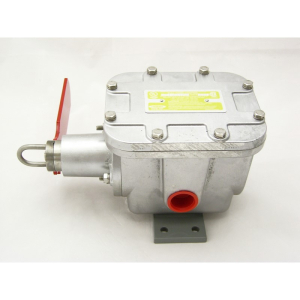Rees 04967-200 Explosion Proof Switch with Flag Status Indicator, 1 (NO/NC) SPDT, Operating End - Left
- Specification
- Overview
- Customers Also Bought
- Your Recently Viewed Items
- Reviews

- $706.50 / Each
- Brand:Rees
- Part #:04967-200
- Regular Price:
$985.22 - $706.50
Overview
Features:
Due to its rugged construction, this heavy duty slack cable style switch withstands even harsh environments and conditions. It provides personnel with immediate positive shutdown of equipment.
This switch is left hand cable pull. Once the cable is properly connected to the switch, a pull of approximately 1/2" will actuate the switch and trip the flag arm down locking the switch and flag arm in the actuated position. The unit is reset by returning the flag arm to the normal up position.
- The standard actuation (pull) force of this switch is 16 lbs
- Recommended cable length is 100 feet maximum per end
- Can be mounted in any position
The cable must be supported every 10 feet to ensure that the weight of the cable alone will not actuate the switch.
The standard construction of this switch consists of the corrosion resistant aluminum housing complete with stainless steel hardware and red epoxy painted heavy duty flag.
- This switch complies with: UL - 698;
- Electrical Ratings: 20 A: 125, 250 or 480 VAC
- 10 A: 125 VAC "L" (tungsten filament lamp load);
- 1 HP: 125 VAC; 2 HP: 250 VAC
- 1/2 A: 24 VDC; 1/2 A: 125 VDC; 1/4 A: 250 VDC
- CSA Certified (245842 - 2130218);
- CSA - C 22.2 No. 14, No. 25 & No. 30;
Explosion Rated:
- NEMA Type 7 - Class I, Groups C & D;
- UL/NEMA Type 9 - Class II, Groups E, F & G for Hazardous Locations
WARNING
These products should only be used where point-of-operation guarding devices have been properly installed & maintained so that appropriate OSHA and ANSI B11.1 regulations & standards are met. Misapplication of the products on machinery lacking effective point-of operation safeguards can cause serious injury to the operator of that machinery.

